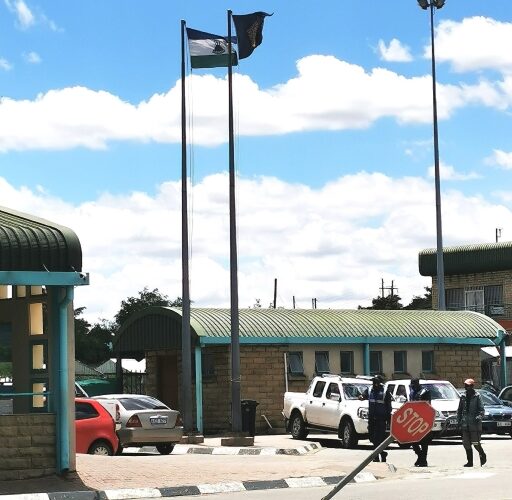Journey Beyond Borders: The Ultimate Guide to Overland Border Crossings
November 14, 2023

Dear travel lovers, most of us have already come into contact with border crossings and yet each border crossing is again a new experience. I have crossed many borders on foot and still every border is a new challenge and different. Also I had to wait already 5 hours at the border between South Africa and Mozambique, was ignored by border officials, my actually cross-border coach left without me and I had to take a local transport behind the border. Once I was on strike and did not leave the Tanzania border building coming from Malawi until I was finally allowed to enter after endless discussions. I had some kind of stickers stuck on my passport at the border in Costa Rica, I had to negotiate hard with the money changers and I had to take motorcycle cabs between the borders for several kilometers in fear of my life. At one border they sent me back as I had to print out all documents myself. Between Mexico and Guatemala, someone wanted to offer me personal protection because otherwise “it would be too dangerous to cross the border and he couldn’t guarantee my safety”. And yet… everything always worked out in the end. Feel free to publicize your border experiences under the comments. With this article I want to take away everyone’s fear and a good preparation is ultimately EVERYTHING.
In the following I will go through the important topics step by step with a few additional tips and experiences. At the end there is a checklist that should help you, that you can approach the border crossing quite relaxed. Enjoy!
- What are the visa requirements for Overland Border Crossings?
- What documents are required for the border crossing?
- What is the best time to cross the border?
- What are the safety concerns at the border crossing?
- How do transportation logistics work at the border?
- Border Crossing Checklist: Ensuring a Smooth Transition
What are the visa requirements for Overland Border Crossings?
If you’re planning an overland trip that requires you to cross international borders, one of the most important aspects is visa requirements. Navigating the visa landscape can be a daunting task, given the myriad rules and regulations that vary from country to country. Nothing will annoy you more than when you’re standing at the border and no visas on arrival are issued. This guide is designed to help you understand and prepare for visa requirements:
Visa on Arrival vs. E-Visa vs. Pre-arranged Visa
As mentioned earlier, you do not want to stand at the border and no visa on arrival will be issued. Here it is important to know that there may be borders in the country that issue a visa on arrival. Sometimes these are only the major airports or larger borders. Therefore, it is important to make sure that the border you want to cross offers you the possibility if you do not have a visa yet.
Visa on Arrival (VoA): Some countries offer visas upon arrival at the border. Ensure you have the necessary documents and exact change for the fee. The exact change is important as many won’t give you change. It is best to always travel with USD and Euros in bills of 10/20/50.
E-Visa: An electronic visa obtained online before travel. It’s typically faster and doesn’t require sending your passport to an embassy. if possible always use the e-visa. It can save you a lot of time. Check here with iVisa if you can apply for an E-Visa and do it directly online for a small commission and less hazzle.
Pre-arranged Visa: Requires an application at the country’s embassy or consulate in advance. For some countries this is the only way to do it. iVisa can help you to organize the visa. If you use the link I will get a small commission for it.
Types of Visas
Tourist Visa: The most common type for travelers, typically valid for short stays and leisure purposes.
Transit Visa: Required if you’re passing through a country en route to another destination.
Business Visa: For travelers engaging in business-related activities.
Residence or Long-term Visa: For those intending to stay in a country for an extended period.
Visa Duration and Validity
Make sure that you understand the difference between the visa’s “validity” (the period during which you can use the visa) and the “duration” (the length of time you can stay in the country once you enter). This is especially important if you have an E-visa or an pre-arranged Visa to use it in the area of validity.
Be up-to-date with the Visa policies
Visa policies can and do change, often without much notice. Regularly check official embassy websites or consult with visa agencies for the most up-to-date information.
What documents are required for the border crossing?
Save yourself some time and headaches by having the following documents with you at every border:
Passport
The most fundamental document, ensure it’s valid for at least six months from your date of entry and has several blank pages for stamps and visas.
Visas
Depending on your nationality and destination, you might need a visa. This could be a visa-on-arrival, e-visa, or one obtained in advance from an embassy. See above for more details about the visa
Multiple Passport Photos
Always carry extra passport-sized photos. Some border crossings require them for visa-on-arrival applications or other permits.
Proof of Onward Travel
Some countries want to ensure you won’t overstay. This could be a return ticket or a ticket to your next destination. There are some websites where you can reserve a flight for about 24 hours. After that, the reservation is canceled by the agency. For the effort you usually pay around 10 USD and during the border crossing you can show a regular flight to another country. To book an onward travel, , for example, you can use a trusted provider like Best Onward Ticket. This offers you the spontaneity without many costs and you don’t have to decide in advance about your onward journey.
Proof of Accommodation
A hotel booking, letter of invitation, or address of where you’ll be staying is sometimes required. I can only recommend to always show a paper booking for the first nights. Even if you want to look for accommodation on site, you should have a booking to be on the safe side. Here is a little tip. It makes sense to book a few days in advance via Booking.com an accommodation that you can still cancel free of charge. This booking confirmation you print out and so you have despite cancellation a proof.
Travel and Health Insurance
Some travelers travel without insurance coverage. Nevertheless, for some countries it is an obligation to provide proof of health insurance coverage. If you still need an international health insurance, Websites such as EKTA or VisitorsCoverage can assist in finding suitable options so that you can compare different policies and select a health insurance that best suits your needs and travel plans.
Vaccination Certificates
Some countries, especially in tropical regions, require proof of vaccinations like Yellow Fever. For example if you want to travel to Rwanda, Tanzania or Colombia. In addition, you should also be able to prove your Covid vaccinations, as they have to be proven more frequently at certain border crossings since 2021. It is important to read exactly for the destination country, which proofs must be presented.
Vehicle Documentation (if driving)
Including the vehicle’s registration, an international driving permit, car insurance valid for the destination country, and a carnet de passage if required.
Itinerary or Travel Plan
While not always mandatory, having a rough itinerary can help answer questions about your travel plans.
Emergency Contacts
Have a list of emergency contacts, including the numbers of your country’s embassy or consulate in the destination country. When you encounter problems, this can be very helpful.
Backup Copies
Always have photocopies or digital backups of all essential documents. In case of loss or theft, having copies can be a lifesaver.
Summary
In conclusion, while the list might seem extensive, being over-prepared is far better than finding yourself missing a crucial document at a border crossing. Organize your documents in an accessible and secure manner, and always check the specific requirements for your destination before embarking on your journey.
What is the best time to cross the border?
Check the Operational Hours and avoid the peak times
Every border is different and not all border crossings operate 24/7. Check the opening and closing times to avoid arriving when the border post is closed. Crossing during daylight can be advantageous. It’s easier to navigate, and you’ll have better visibility for signs, road conditions, and any potential hazards.
Some borders can get incredibly busy during certain times of the day, especially those near major cities. Early morning or late afternoon might be quieter. This has sometimes an enormous impact on the boarder wait times. Trust me you don’t want to get stuck there for 5 or more hours. It doesn’t matter which border I crossed it never felt like a comfort zone for me.
Local Holidays and Festivals
Borders can be congested during national holidays or local festivals. Additionally, some borders might operate with reduced hours or even close during significant national events.
Seasonal Considerations
In some regions, the weather can play an important role. For example, in the rainy season, certain roads leading to the borders may be impassable. Always make sure that you choose a border crossing that is easily accessible when traveling in the rainy season.
Political and Social Climate:
It’s essential to be aware of the current political situation. Borders can be closed or crossings can be delayed during times of political unrest or tensions. For example, crossing the border from Mozambique into Tanzania may be difficult and too risky due to ongoing fighting in northern Mozambique in Cabo Delgado province. Similarly, if you want to cross the border between Uganda and DR Congo at the Bunagana border. Be aware of the political situation.
Some borders might be safer to cross during specific times. For instance, if a border area is known for night-time banditry, it’s wise to cross during the day. Most border crossings are harmless and easy to cross, but you will travel more relaxed if you know beforehand.
Time Zone Changes:
Remember that crossing a border might also mean a change in time zone. This can affect your calculations if you’re trying to reach the border by a specific time.
What are the safety concerns at the border crossing?
Being prepared can make the difference between a smooth crossing and a difficult ordeal. Let’s go over some of the things you might face so you’re prepared and may already have an answer.
Bribery
Some borders are notorious for officials or touts trying to extract extra fees or bribes. Always ask for an official receipt and be aware of the standard procedures and costs. Several times I came in one of these situations. E.g. leaving the European Union by car from Croatia through Bosnia and Herzegovina or the most recent example was when crossing the border from Mozambique to Malawi. For the processing of the papers, one is led into a separate room. During the processing, the border official asked me if I had something to eat, drink or anything else for her as a gift. I smiled kindly and said “sorry, unfortunately not”. I can only advise donations of any kind first always friendly refuse and see if the border official is satisfied with it. Especially in African countries it is often a good idea to claim that you have a friend at the embassy. Many are dependent on their jobs and then back out.
Banditry and Crime
Some border areas, especially remote ones, might be known for criminal activity. Research in advance and, if necessary, consider traveling in a group or convoy. Be sure you choose a “kind” border for the crossing. Anyway small crimes can always happen. These are the most common crimes and scams which may happen so be always aware:
- Document Scams: Scammers might offer to “help” with your paperwork, only to demand money once they have your documents in hand.
- Baggage Theft: Leaving luggage unattended, even for a moment, can result in theft. Sometimes, individuals might offer to help with bags only to run off with them.
- Overpriced Transportation: Once you’ve crossed, there might be taxi drivers or touts offering transportation at exorbitant rates, capitalizing on travelers’ unfamiliarity with local prices. If you can’t find out about transportation beforehand. Try asking locals and border officials at the border to get a feel for the prices.
- Pickpocketing: Crowded border areas can be prime locations for pickpockets. Especially when travelers are distracted by the crossing process. Be aware and don’t forget to have your copies.
- Fake Visa Services: Touts may offer to expedite or process visas for a fee, only to deliver fake visas or simply take the money and disappear.
- Security Guard: A person stands between the border and offers you his protection, because the border is dangerous and he will not protect you otherwise. You can kindly refuse this offer. Don’t pay anyone!
- Currency Exchange Scams: Unofficial money changers offering attractive exchange rates, only to provide counterfeit currency or use sleight of hand to shortchange travelers.
- Bogus Fees: Scammers or even sometimes officials might claim there are additional fees or taxes to be paid, which don’t actually exist.
Health Risks
Some border areas might have health checks due to outbreaks or endemic diseases. Ensure you’re vaccinated and carry proof of vaccination as mentioned in the documents as well.
Digital Security
It happens regularly these days. At some borders, officials might ask to inspect your electronic devices. Ensure you have strong passwords and consider using encryption for sensitive information. Here is a detailed article about data security while traveling.
How do transportation logistics work at the border?
Crossing international borders isn’t just about passports and visas; it’s also about understanding the transportation logistics that come into play. Whether you’re on foot, behind the wheel, or aboard a train, each mode of transport has its unique set of challenges at border crossings.
Driving
For those driving, customs checkpoints often involve vehicle inspections, ensuring that travelers aren’t transporting prohibited goods. It’s essential to be aware of vehicle documentation requirements, which might include international driving permits or vehicle registration.
Bus or Train
For bus or train passengers, expect to disembark with luggage in tow for customs checks. Some borders might even necessitate changing trains or buses. Often it can be confusing and the bus driver may not speak English. Therefore, try to get the information about the border crossing procedure from another traveler.
self-organized (by foot)
If you plan to cross the border on foot or by self-organized public transportation, be sure to check prices and departure times to the nearest cities. If in doubt, always ask several people or border officials. Most people are helpful and happy to have you visit their country. And there is hardly a nicer introduction to a new country than crossing a border without having a negative experience beforehand at the border.
Border Crossing Checklist: Ensuring a Smooth Transition
Identification and Travel Documents
– [ ] Valid passport (with at least six months of validity and blank pages)
– [ ] Required visas (e-visa, visa-on-arrival, or pre-arranged visa)
– [ ] Exact change for the visa fee
– [ ] Backup copies of all essential documents
– [ ] Proof of onward travel
– [ ] Proof of accommodation
– [ ] Proof of health insurance
Customs and Declarations
– [ ] Familiarize yourself with customs regulations for your destination
– [ ] Declare currency if carrying amounts over the specified limit
– [ ] Declare any items subject to duty or restrictions
Medications
– [ ] Carry prescription medications in their original packaging
– [ ] Have a copy of the prescription or doctor’s note
Health Precautions
– [ ] Carry proof of required vaccinations
– [ ] Be aware of any health checks or screenings at the border
Financial Preparations
– [ ] Carry local currency for any fees or charges
– [ ] Be aware of currency exchange rates and locations
Safety and Security
– [ ] Plan the arrival time taking into account the peak times and opening hours of the border
– [ ] Be aware of common scams or crimes at the border
– [ ] Secure your belongings and be alert to pickpockets
– [ ] Keep emergency contacts handy especially your country’s embassy or consulate
Transportation Logistics
– [ ] If traveling by bus or train, be prepared to disembark for customs checks
– [ ] Check if you need to change buses or trains after crossing
– [ ] Check prices for public transport and taxis
Vehicle (if driving)
– [ ] Ensure vehicle documentation is in order (registration, insurance)
– [ ] International driving permit (if required)
– [ ] Familiarize yourself with local driving regulations
Pets and Animals
– [ ] Ensure you have health certificates and proof of vaccinations
– [ ] Be aware of potential quarantine procedures
Cultural Awareness
– [ ] Familiarize yourself with local customs and etiquette
– [ ] Carry a translation app or phrasebook if language barriers are expected
Stay Informed
– [ ] Regularly check official sources or travel advisories for any changes in border regulations or potential disruptions
If you follow this checklist and make sure that every point is taken care of, you can be relaxed about a successful border crossing. Have a good trip and don’t forget to enjoy the border crossing ahead of you.











